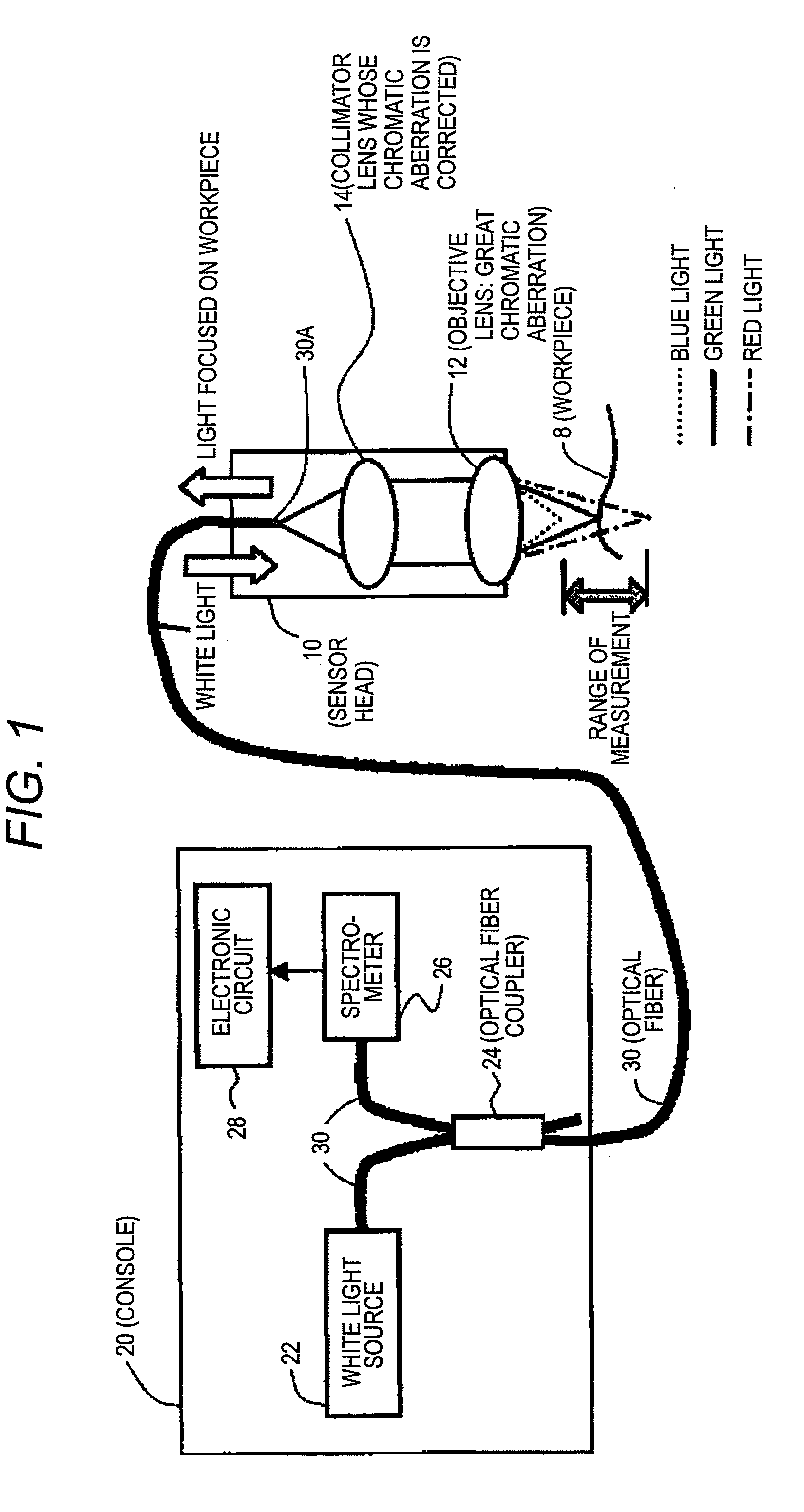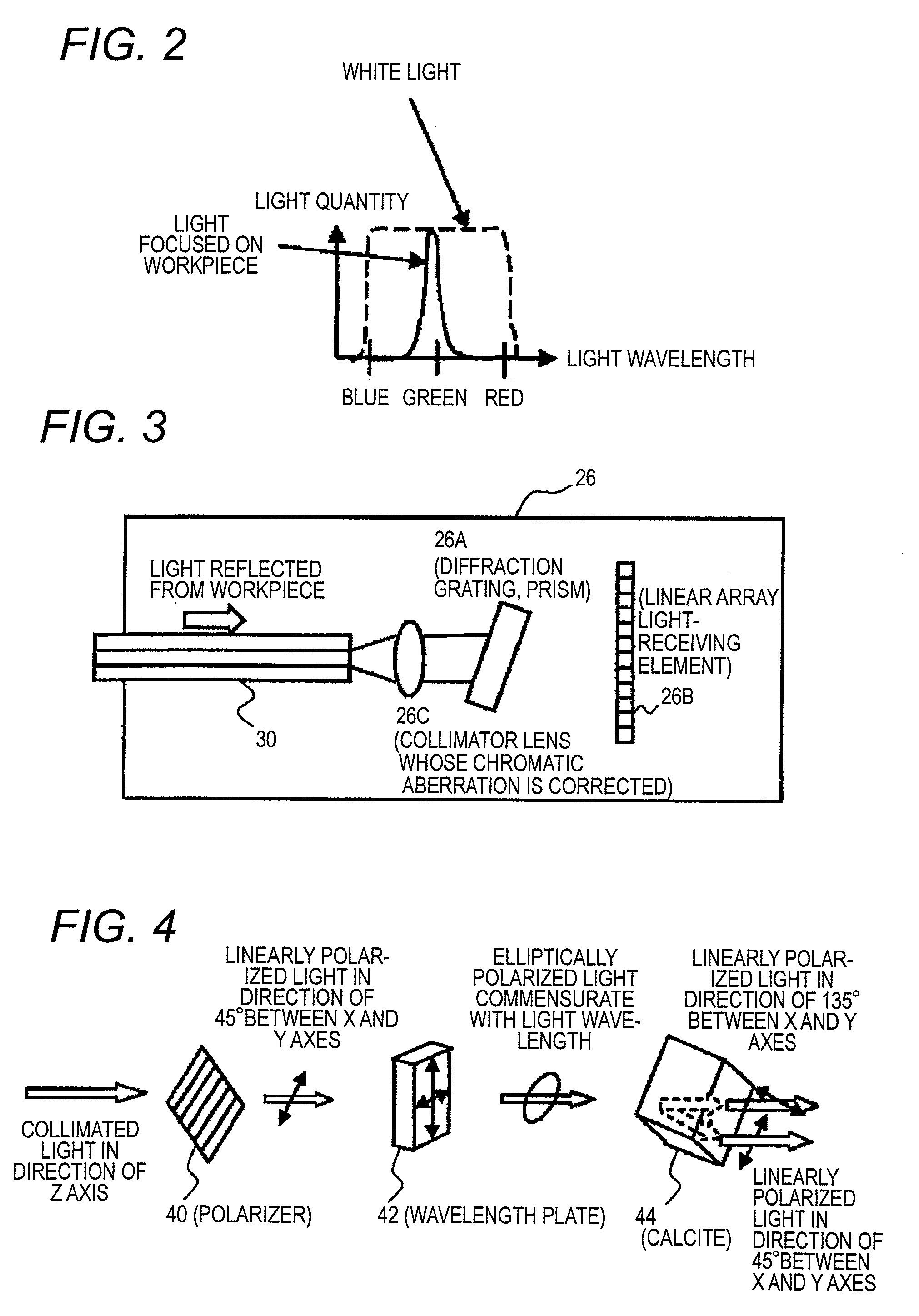Optical displacement meter
a technology of optical displacement meter and meter, which is applied in the direction of optical radiation measurement, instruments, measurement devices, etc., can solve the problems of difficult to achieve high speed response difficult high speed response, etc., to achieve high resolving power, high linearity, and high resolving power
- Summary
- Abstract
- Description
- Claims
- Application Information
AI Technical Summary
Benefits of technology
Problems solved by technology
Method used
Image
Examples
second embodiment
the present invention that can improve the response speed is described in detail hereunder.
In a case that a photodiode is used as the light receiving element, a receiver circuit that realizes a high-speed response can be configured by using a photodiode having a little interterminal capacity (electrostatic capacity). Since an electrostatic capacity of depletion layer of p-n junction in the photodiode is proportional to an area of an acceptance surface of the photodiode, the high-speed response can be realized when the acceptance surface is made to small to make the electrostatic capacity smaller.
According to the chromatic confocal displacement meter of the first embodiment (shown in FIG. 5), the lights received by the photodiodes 58A and 58B are collimated lights as shown in FIG. 18A. When the acceptance surface is smaller than the sectional area of the collimated light, it is necessary to make an incident beam of the acceptance surface thinner. Therefore, in the second embodiment, ...
PUM
 Login to View More
Login to View More Abstract
Description
Claims
Application Information
 Login to View More
Login to View More - R&D
- Intellectual Property
- Life Sciences
- Materials
- Tech Scout
- Unparalleled Data Quality
- Higher Quality Content
- 60% Fewer Hallucinations
Browse by: Latest US Patents, China's latest patents, Technical Efficacy Thesaurus, Application Domain, Technology Topic, Popular Technical Reports.
© 2025 PatSnap. All rights reserved.Legal|Privacy policy|Modern Slavery Act Transparency Statement|Sitemap|About US| Contact US: help@patsnap.com



